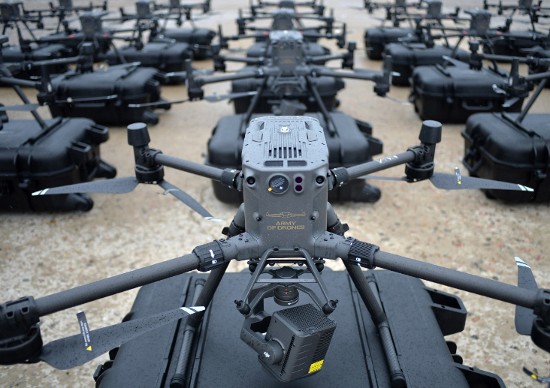The war in Ukraine launched by Russia, a year ago tomorrow is already unconventional. A nuclear superpower invaded its neighbour using columns of tanks and with soldiers almost in dress parade. The initial onslaught to capture Kyiv, Ukraine’s capital, failed. The attempt to seize Ukraine’s second city, Kharkiv, also was repelled.
Participants aiding Ukraine include volunteer brigades from western countries playing a role similar to what was seen for the Republicans in the Spanish Civil War of the 1930s. Meanwhile, NATO countries are playing the role the United States took on in the first two years of World War Two, arming the underdog, Ukraine, much like America’s support of Great Britain against Nazi Germany and its partner, Fascist Italy.
The war has become schizophrenic. It resembles trench warfare from World War One on the Eastern Ukraine front. There is an absence of aerial dogfights between combatant airforces, the stuff of Top Gun, Billy Bishop, and the Red Baron. Instead, this aerial war uses smart lethal machines: intelligence and surveillance drones, drones with weapon systems, and kamikaze swarms.
Russia is also using guided and cruise missiles to target areas behind the frontlines including Ukrainian cities and infrastructure. The deployment is similar to the use of the V1 and V2 weapons that Germany used in retreat against British, Belgian and Dutch cities. Tens of thousands of civilians died from buzz bomb and guided missile attacks in the concluding year of that war.
Getting back to the present, behind the scenes of the Ukraine war are growing numbers of 21st-century technologies already altering how war is and will be fought today and in the future.
I had hoped to cover the full range of this subject in one posting but it appears that it will take three to describe what is happening with war in the 21st century. So this first part focuses on airborne military drones. Subsequent articles will look at other technologies from satellite networks to artificial intelligence (AI).
Aerial Drones and Warfare
Non-lethal aerial intelligence gathering goes back to the Montgolfier brothers who were the first to launch balloons with humans aboard in France back in 1783. The use of human observers in balloons moved from these first flights of fancy to military deployment following the French Revolution. During the American Civil War, from 1861 to 1865, the Union army regularly deployed balloons to see what was happening on the Confederate side of the line.
In both 20th-century world wars, aerial surveillance moved to dirigibles and airplanes. The advent of two-way radio communications meant observers in the air could send information about what they were seeing to commanders in the field.
Today, the multi-million dollar Predator drones that the U.S. used in Afghanistan are still being deployed. But smaller, cheaper drones inspired by hobbyist kits are replacing them. These are drones with inexpensive yet sophisticated navigation technology, onboard wireless communications and video cameras to send coordinates and real-time imaging to operators.
This new age of cheap drones has given underdog Ukraine the ability to fight Russia both at and behind the front. Drone operators send coordinates and pictures to artillery batteries that target Russian tanks, troop carriers, and field guns. Their successes are posted on Twitter for all the world to see. They have helped level the playing field in this deadly conflict.
Russia has also deployed drones in the war targeting Ukraine’s cities, transportation and energy infrastructure. The Russians use swarms of kamikaze drones containing onboard explosives. Iran is the supplier. They are a substitute for missiles and a fraction of the cost at approximately $20,000 apiece. They are even giving artillery shells a run for the money. And although Ukraine’s air defence systems can knock down many incoming missiles, enough of these kamikaze drones sent in swarms can get through to inflict damage and kill people.
Currently, for both Ukraine and Russia, it is human operators in control of these growing drone armies. But onboard AI could soon make future drones autonomous, capable of deciding what and who to target.
How far are we away, then, from fleets of future AI-guided drones and even AI-robotic infantry being used on future battlefields? The world community needs to act to outlaw this next evolutionary step or I’m afraid wars in the 21st century will have machines making independent decisions on who to kill and what to destroy.

















[…] The Evolution of Warfare in the 21st Century – Part One: Here Come the Drones […]